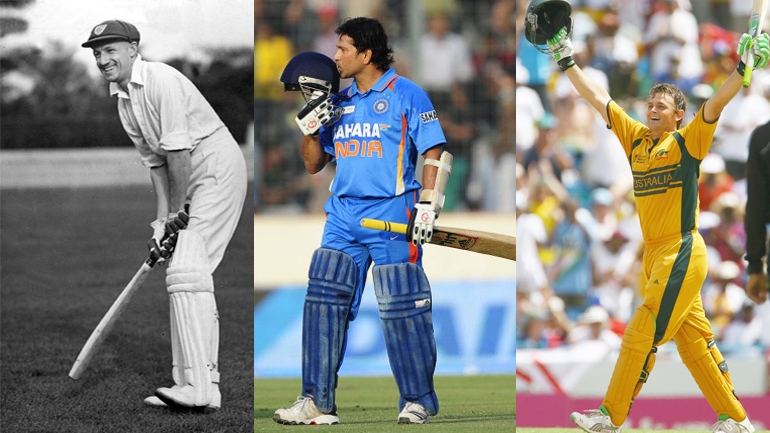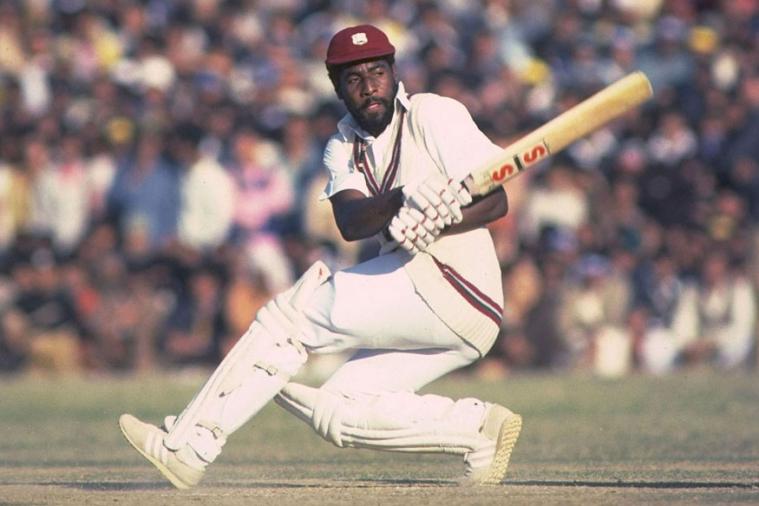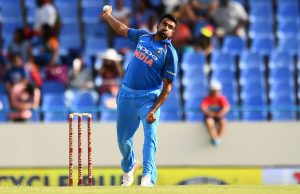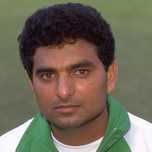Five Biggest Game Changers of the Past Decade
Game Changers of the Past Decade: Over time, the cricket world has seen several amazing players who set and broke their own records. They had set the milestone standard of good cricket since long back. New players look up to them and improve their skill sets. The legendary cricketers are truly the inspiration for the new generation of the player as well as the future generation which will start playing in the next century. The past decade had been a blooming period for this sport. So many outstanding classic players played this game, that it is very hard to estimate who are the best ones. Most of them ushered a mini revolution in the world of cricket – they redefined cricket in their own terms.
This article focuses on the five biggest game changers in the past decade. Careful consideration is done to handpick the celebrated players from the past decade. One point to be noted is that this article focuses on diversified countries and their players. However, in the international cricket scenario, there are many players of the same country who showed enough prowess to prove themselves as the top-class cricketers in the world. We will now discuss the Five Biggest Game Changers of the Past Decade.
Don Bradman
Game Changers of the Past Decade: Sir Donald George Bradman, often referred in the world of cricket as “The Don” is one of the greatest players the world has ever seen. He used to play international cricket for the Australian national team. He is a master of setting records in all formats of cricket barring the T20 as that format of cricket was not prevalent then. He was born on 27th August 1908 at Cootmundra, New South Wales. He was a celebrated right-handed batsman. Bradman made his first-class debut at the Adelaide Oval at the age of 19. He scored a hundred on his debut, with an innings of 118. It soon became his famous trademarks—fast footwork, calm confidence, and rapid scoring. Again during the final match of the season, he made his first century at the SCG, against the Sheffield Shield champions Victoria.
Despite his immense potential and prowess, Bradman was not selected for the Australian second team to tour New Zealand. He decided that his chances for Test selection might be improved by moving to Sydney for the 1928–29 season. At that time, England was to tour in defense of the Ashes. During the initial years of his life, he continued working in real estate, but later, he took a promotions job with the sporting goods retailer Mick Simmons Ltd. During the first match of the Sheffield Shield season, he made a century in each innings against Queensland. This was followed with his scores of 87 and 132 not out against the England touring team, and finally, he was rewarded with selection for the first Test, to be played at Brisbane. However, owing to his poor performance in his tenth first-class cricket, he was again dropped from the team. However, no adverse situation can dim the power of a talented player. The initial years of his career was shaped by the high bounce of the ball on matting-over-concrete pitches. He preferred “horizontal-bat” shots (such as the hook, pull and cut) to deal with the bounce and formed a unique grip on the bat handle that would accommodate these strokes without compromising his ability to defend.
Employing a side-on stance at the wicket, Bradman would stay perfectly still as the bowler ran in. His backswing had a “crooked” look that was much criticized. However, he resisted entreaties to change. His backswing would keep his hands in close to the body, leaving him completely balanced and able to change his stroke mid-swing, if need be. Another mentioning factor was the decisiveness and elegance of Bradman’s footwork. He “used the crease” by either coming meters down the wicket to drive, or playing so far back that his feet would always end up level with the stumps when playing the cut, hook or pull. His style of playing evolved with experience. He adapted his technique during the Bodyline series, deliberately moving around the crease in order to attempt to score from the short-pitched deliveries for a temporary period. During the peak of his career, in the mid-1930s, he possessed the ability to switch between a defensive and attacking approach whenever the occasion demanded.
In the initial years of Post-World War-II period, he adjusted to bat within the limitations set by his age and became a steady “accumulator” of runs. However, Bradman lacked the skill of batting on sticky wickets. Bradman’s Test batting average of 99.94 is one of the most iconic cricket statistics, achieved by no other cricketer. He scored centuries at a rate better than one in every three innings. He also successfully converted 41% of his centuries to double centuries. He is also the first batsman to score a Test triple century, batting at number 5 position. Cricket world is incomplete without Sir Don Bradman.
Sachin Tendulkar
Game Changers of the Past Decade: The much- loved name in the hearts of Indian cricketers is none other than the amazing player, Sachin Ramesh Tendulkar. He is often compared with Don Bradman owing to his spectacular achievements in setting up and breaking records in the world of cricket. He has the most centuries scored among all international players. He is also the highest run scorer of all time in International cricket. He made his first Test debut in 1989 against Pakistan when he was only 16 years old. Colloquially, he is known as Little Master or Master Blaster.
He was also part of the Indian team which won 2011 World Cup under the captaincy of Mahendra Singh Dhoni. He is cross-dominant: he can bat, bowl and throw with his right hand, but he writes with his left hand. He also practiced left-handed throws at the nets on a regular basis. Cricinfo columnist Sambit Bal has regarded him as the “most wholesome batsman of his time“. His batting is based on perfect balance and poise and his batting limits unnecessary movements and flourishes. He has a slightly little preference for the slow and low wickets which are mainly typical in India and has scored many centuries on the hard, bouncy pitches in South Africa and Australia. He is renowned for his unique punch style of hitting the ball over the square. He is also well known for his picture-perfect straight drives, which are completed with no follow-through. The straight drive is often considered to be his favorite shot.
In 2008, Sunil Gavaskar remarked that “it is hard to imagine any player in the history of the game who combines classical technique with raw aggression like the little champion does“. Equipment-wise, he is comfortable to perform well with a heavier bat than the average batsmen. Tendulkar is not a regular bowler, yet he can bowl medium pace, leg spin, and off spin too. He generally bowls when two batsmen of the opposite team have been batting together for a long period, as he is often thought to be a useful partnership breaker. With his bowling, he has helped the Indian team to win the game on more than one occasion. He holds the record of 201 international wickets – 46 in Tests, 154 in ODIs where he is the twelfth highest wicket taker of India, and he also managed to take one wicket in Twenty20 Internationals as well.
Sir Isaac Vivian Alexander Richards
Game Changers of the Past Decade: Issac Vivian Alexander Richards or simply Sir Viv Richards is one of the greatest ODI players in the century. He represented West Indies at Test and International levels. In one-day cricket, he was regarded by Wisden Cricketers’ Almanack to have played the best One Day International (ODI) innings of all time. Overall, he has scored 8,540 runs in 121 Test matches at an average of 50.23, including 24 centuries. As a captain, he was equally fantastic and has won 27 of 50 Test matches and lost only 8. He also holds the record of scoring nearly 7,000 runs in One Day Internationals and more than 36,000 in first-class cricket.
Before he began his career on a full-fledged manner, batting was basically all about playing the overs out and hoping for a decent 3-4 runs per over run-rate in limited overs cricket. However, Viv Richards wreaked havoc by taking the attack to the bowlers and hitting them all over the park while batting in the top middle order. He was never intimated by long run-ups and ferocious bowling speed. His batting style became the cause of sleepless nights for many bowlers. His aggressive style of batting was one of the most important reasons for West Indies’ dominance in the cricket world during the 70s. His jaw-dropping batting style gave confidence to all his teammates and frightened the opponent team.
Wasim Akram
Game Changers of the Past Decade: It would be wrong to say that the cricket world is always dominated by legendary batsmen of all time. Wasim Akram, the left-arm fast bowler, redefined cricket and set the standard of bowling for the future generation. Wasim Akram is a former player from Pakistan who is considered as one of the greatest bowlers of all time. Before he came into the cricket scenario, pace bowling was all about pace where the emphasis was given only on the speed of throwing the ball. And then it was this man who showed the world how the ‘line length’ approach with balanced swing is more useful than just raw pace.
He had the skill to bowl quicker if he wanted to but he stressed more on the optimum combination of swing and speed. He was a significant player in the 1992 World cup where Pakistan emerged as champions defeating England. Akram was the highest wicket-takers in the tournament. He won 17 Man of the Match awards in 104 Tests. He holds the record of four hat tricks in international cricket- two in ODIs and two in Tests. He also holds the record of taking the greatest number of ODI wickets as a captain.
Adam Gilchrist
Game Changers of the Past Decade: Adam Gilchrist is another most celebrated Australian player who is often regarded as one of the biggest game changers in the cricket universe. He was an attacking left-handed batsman but he is famous for his record-breaking wicketkeeping. He is well known as one of the greatest batsman-wicket keeper combinations in the whole world. His strike rate is also amongst the highest in the history of both Test cricket and ODI.
He was the first player who has hit 100 sixes in Test cricket. Apart from his playing skills, he is also regarded as a gentleman for walking out when he felt that he was out, even before the declaration of the umpire. Adam Gilchrist was voted the ninth greatest all-rounder of the last one hundred years in a poll of over ten thousand people hosted in 2007 by ESPNcricinfo Gilchrist has also been inducted by ICC in the ICC Hall of Fame in the year 2013.
Also Check:










